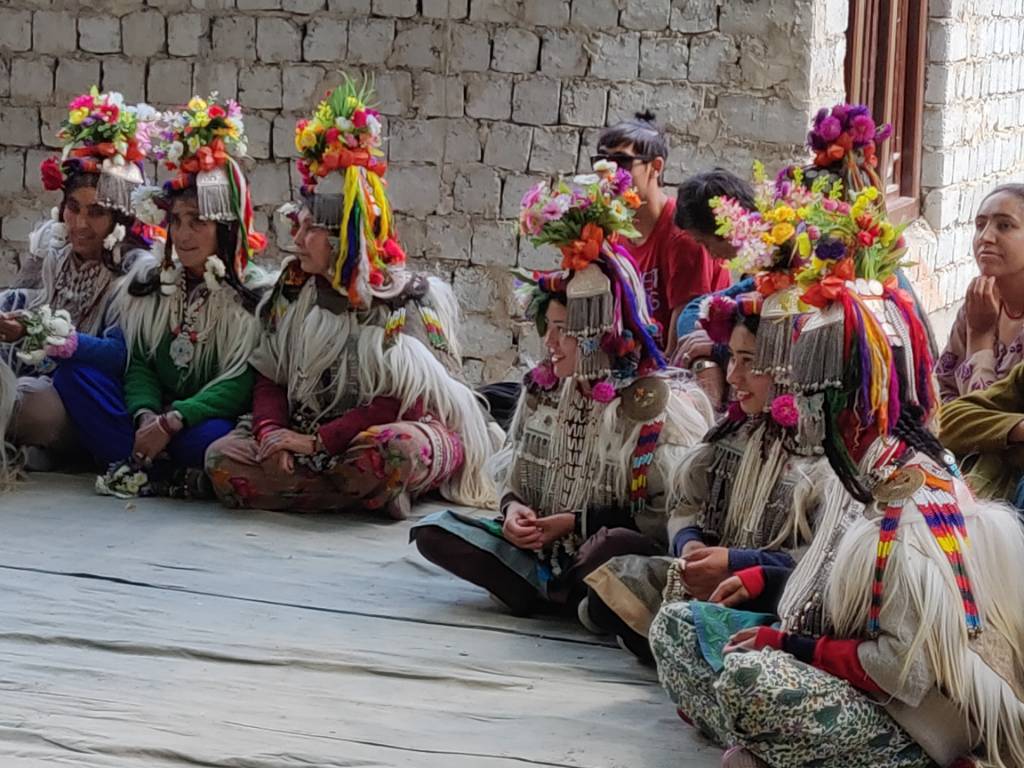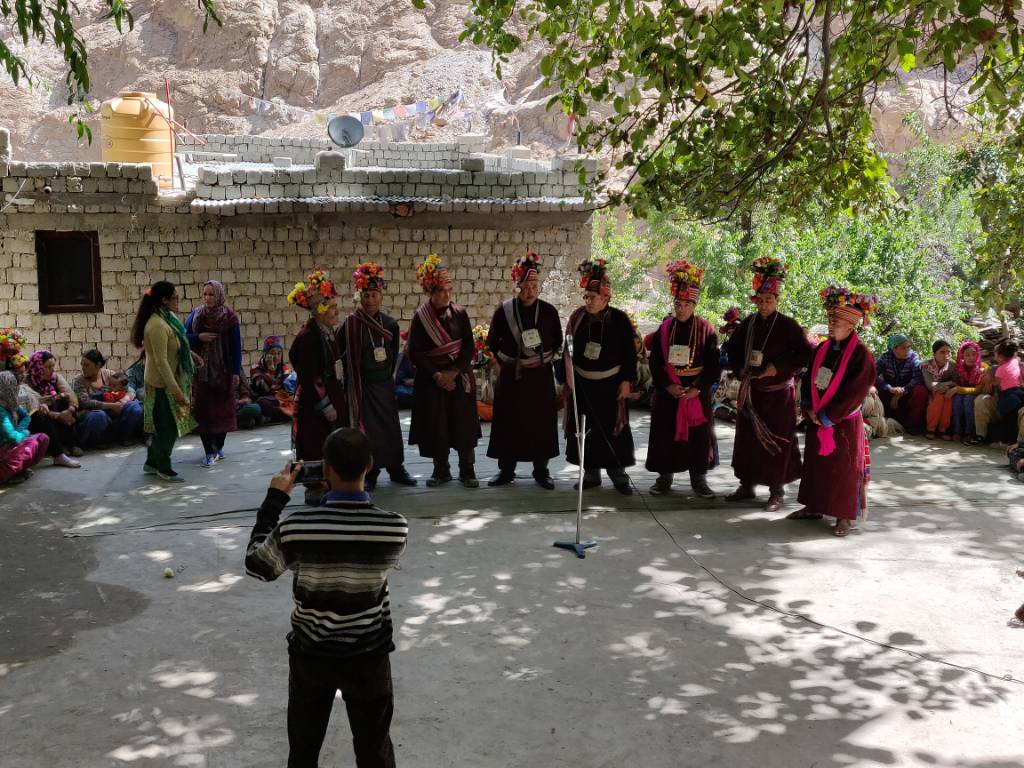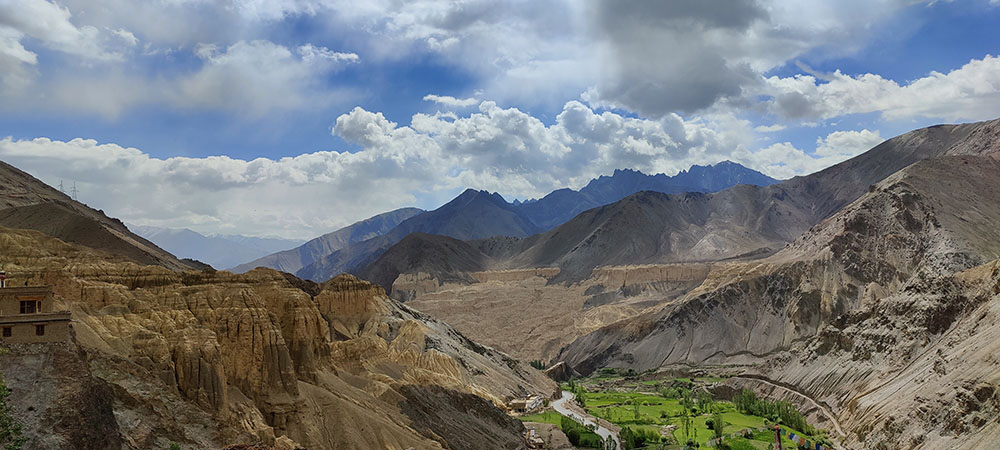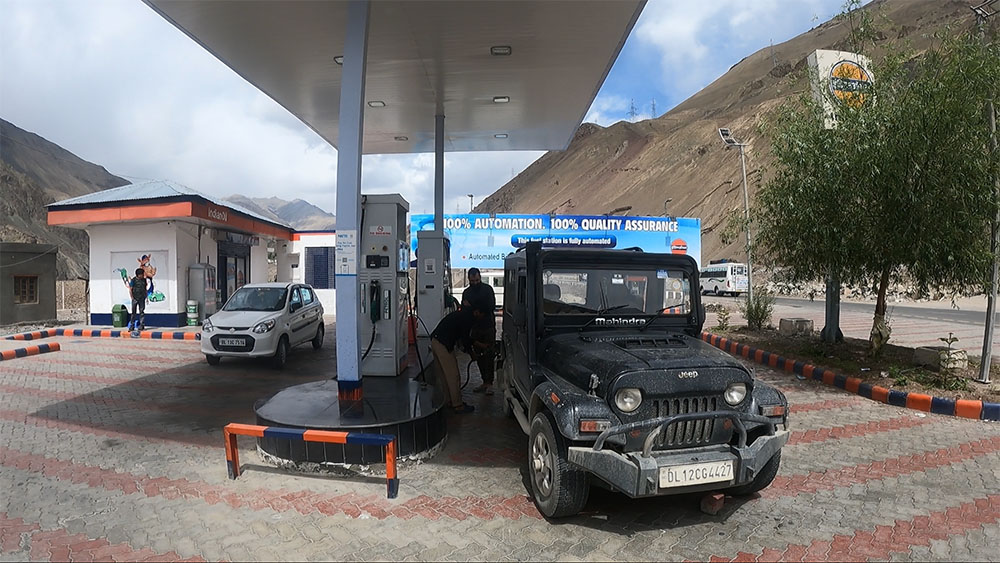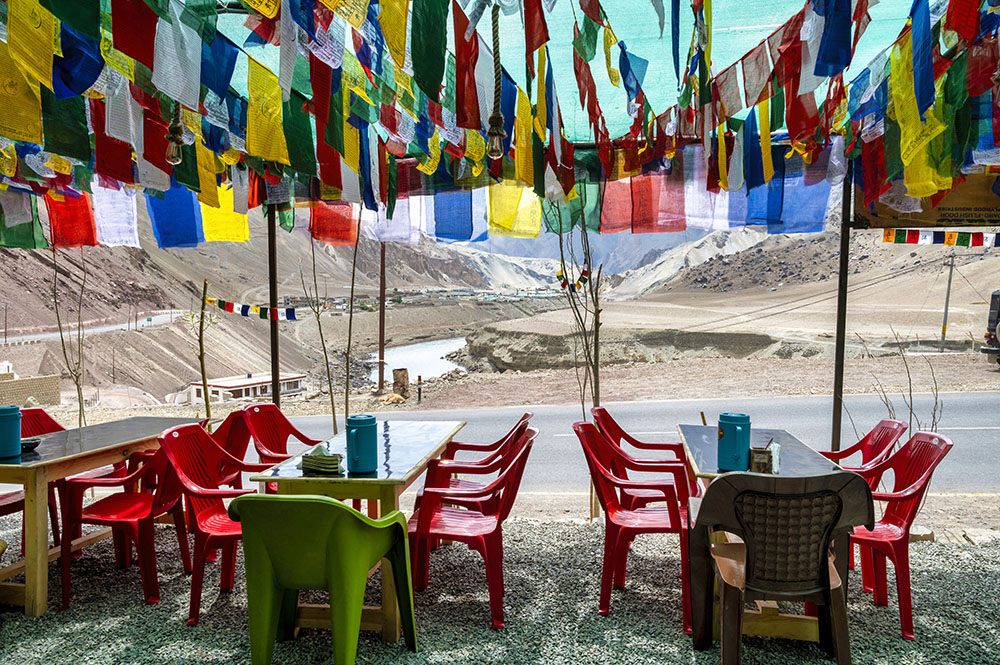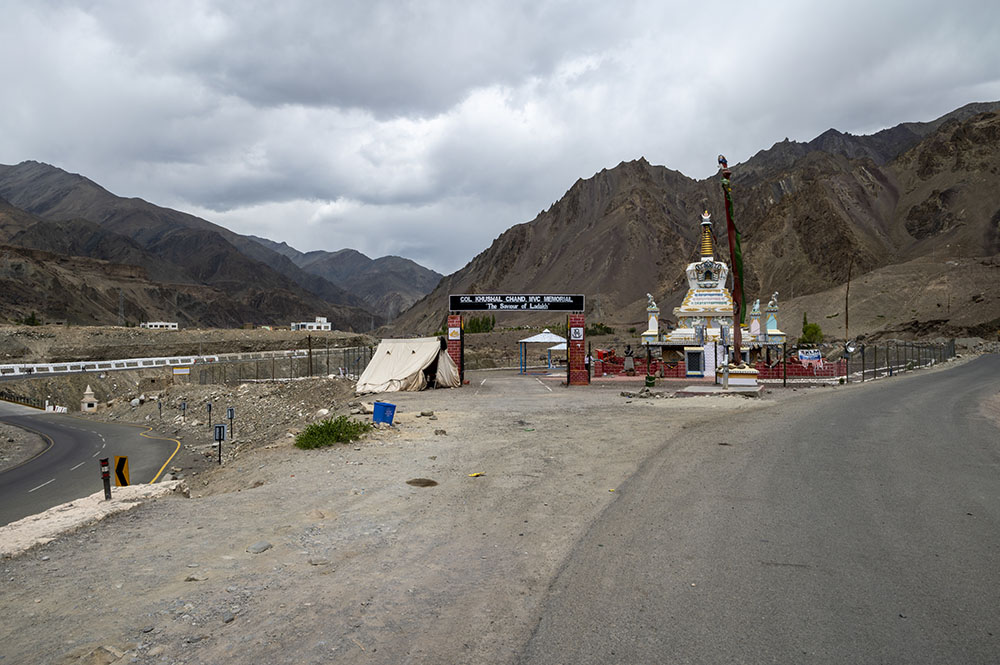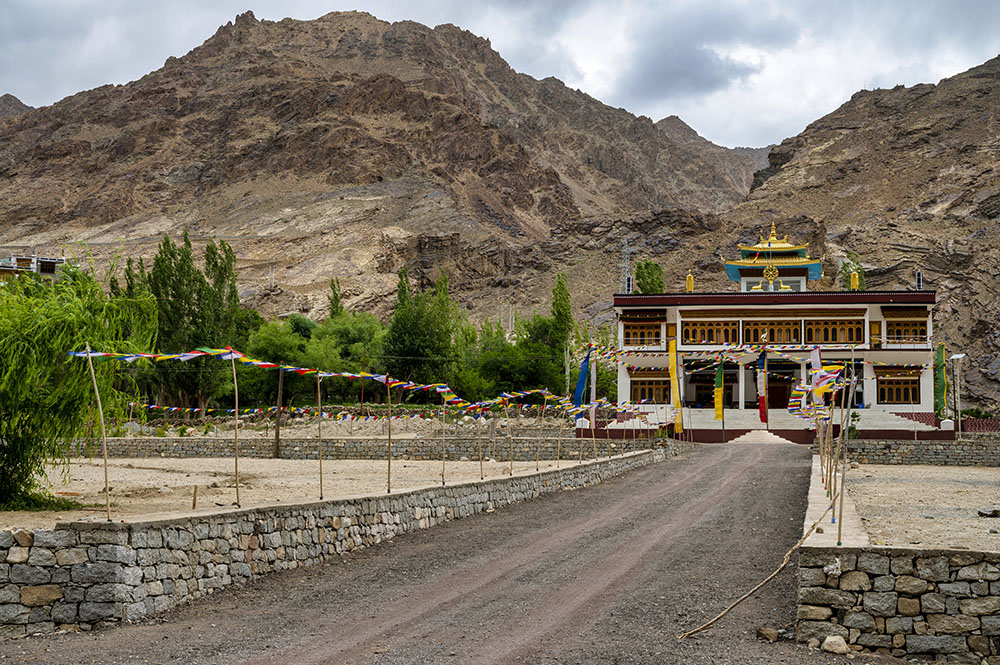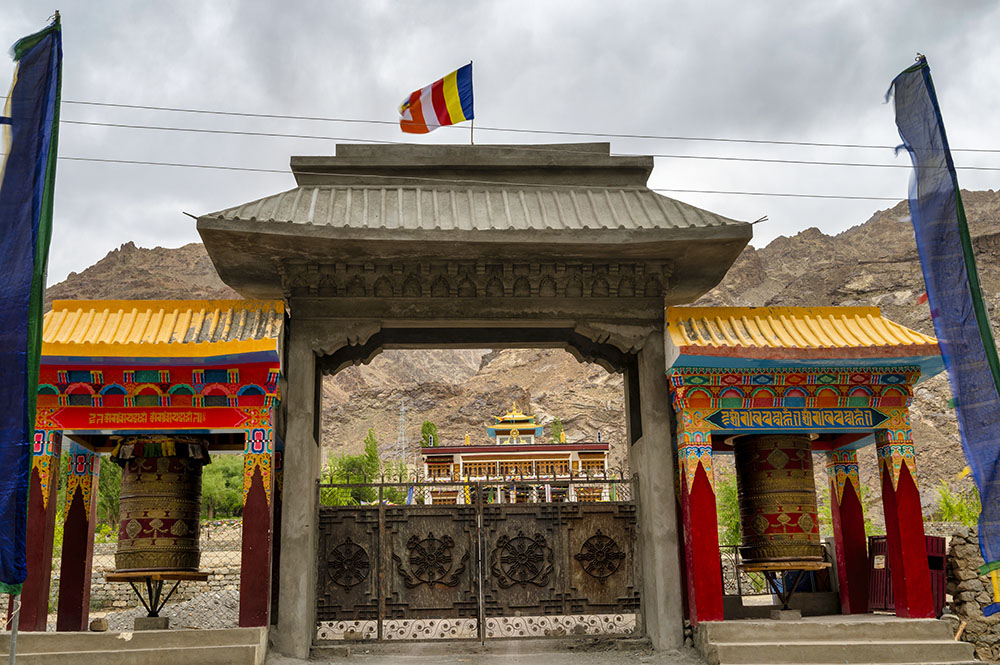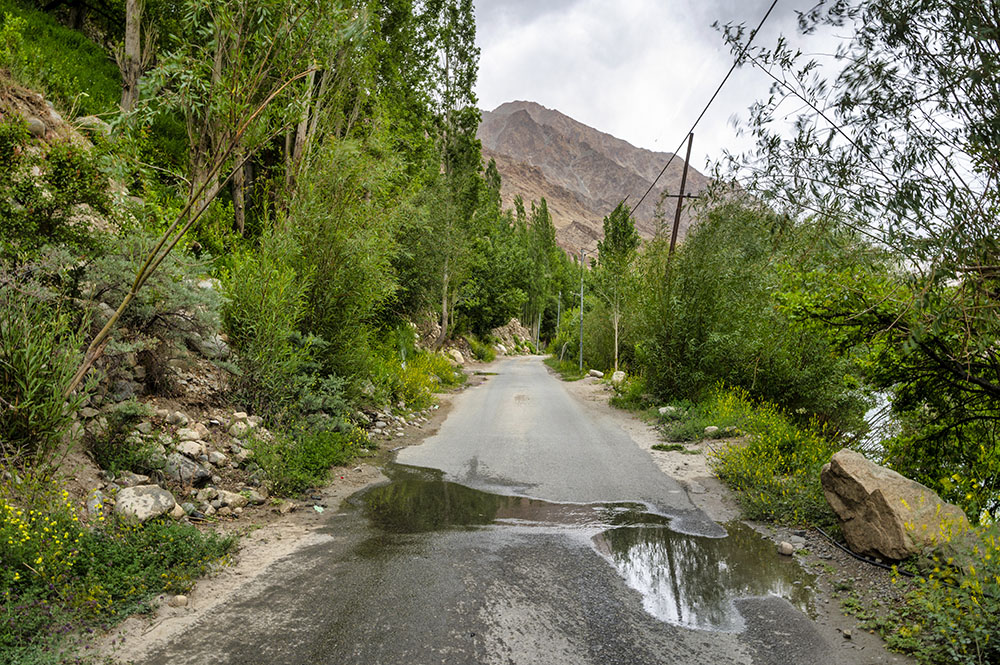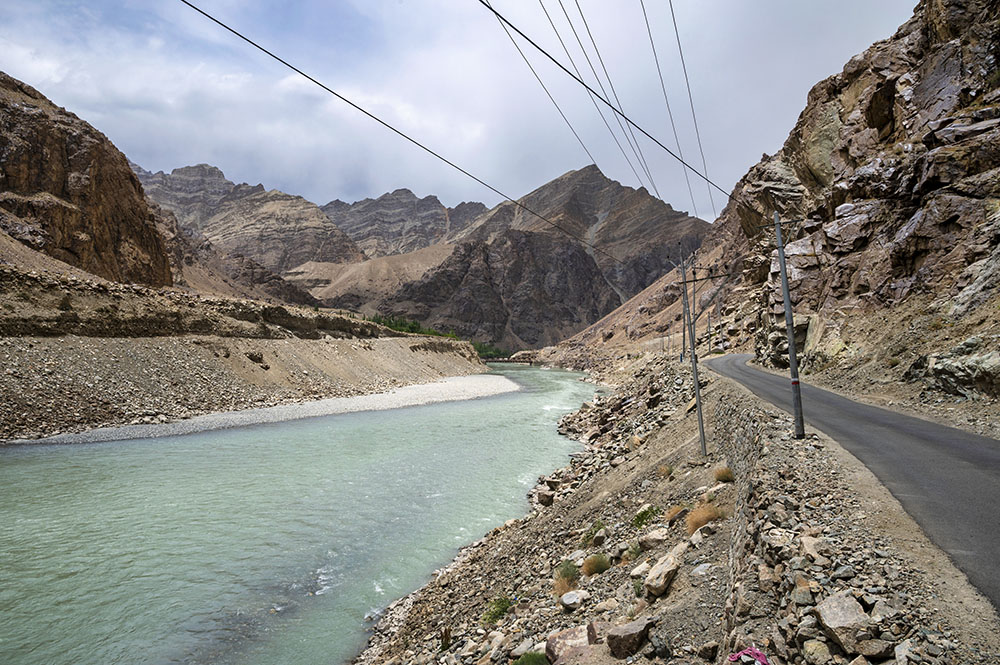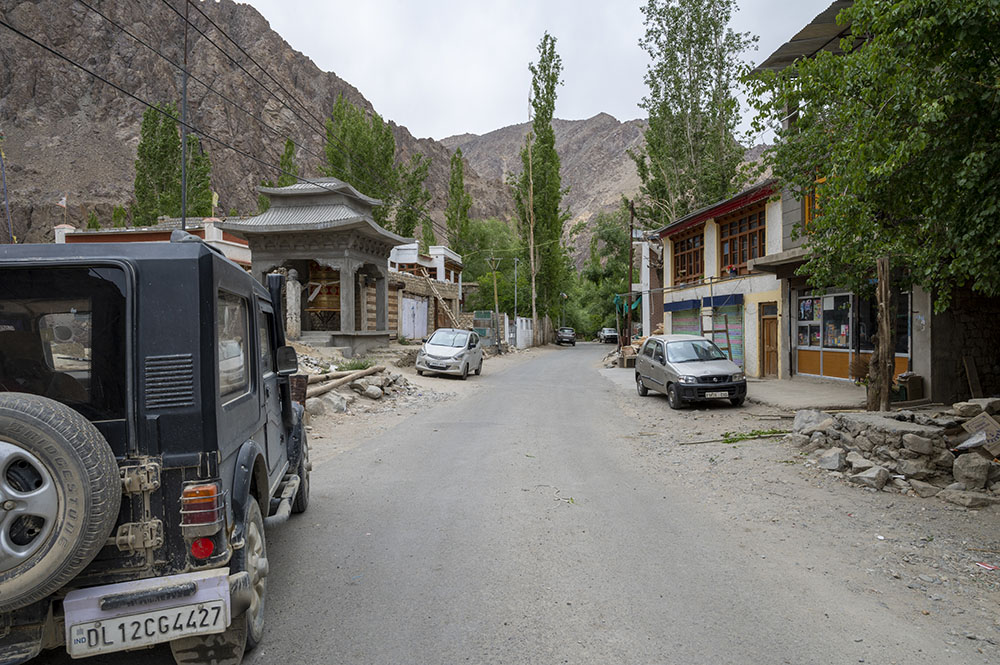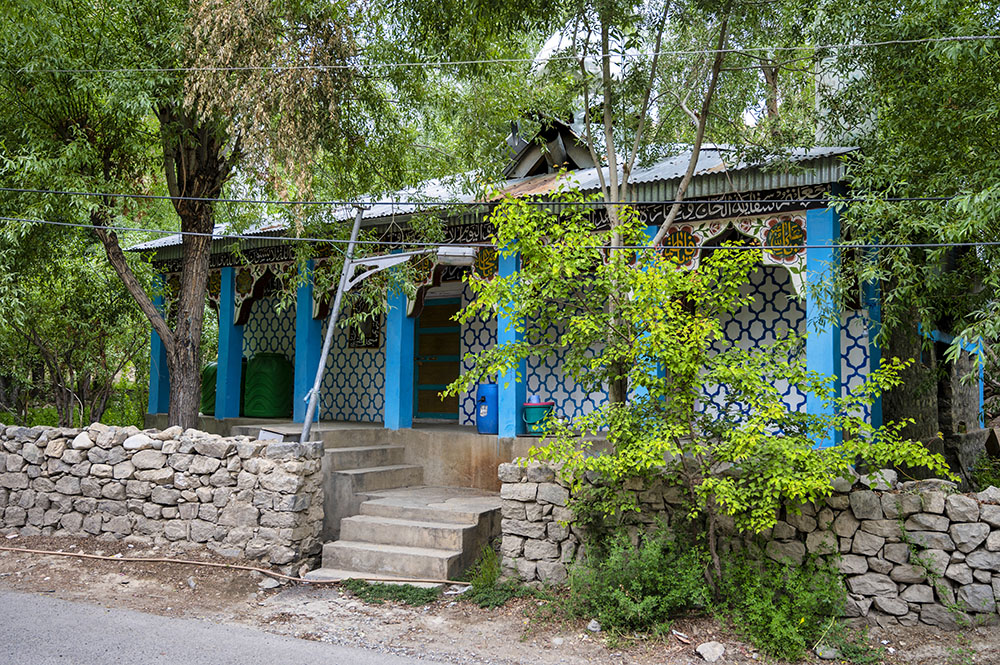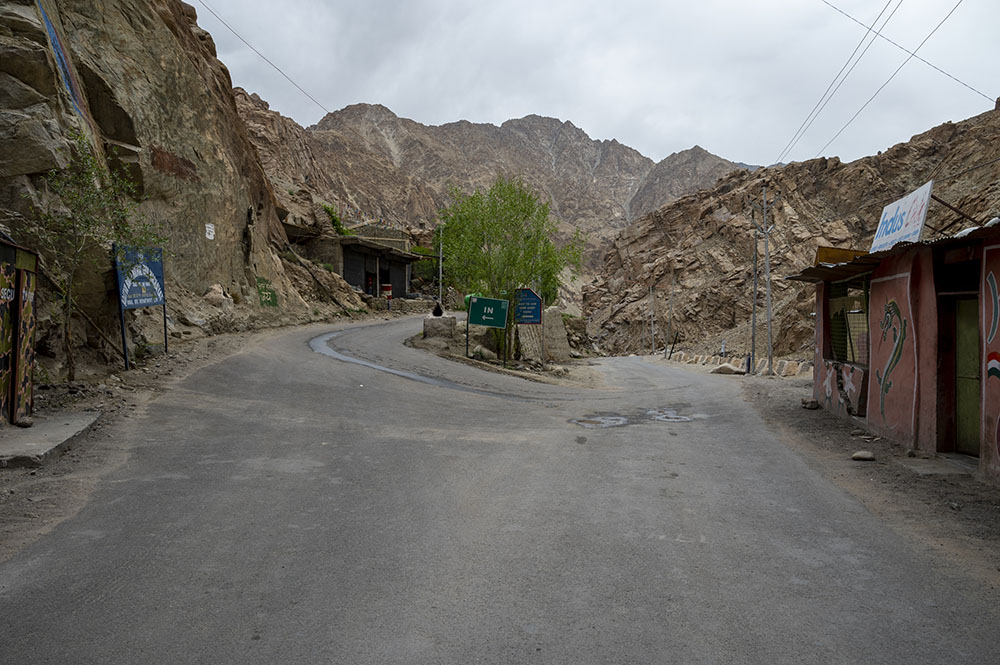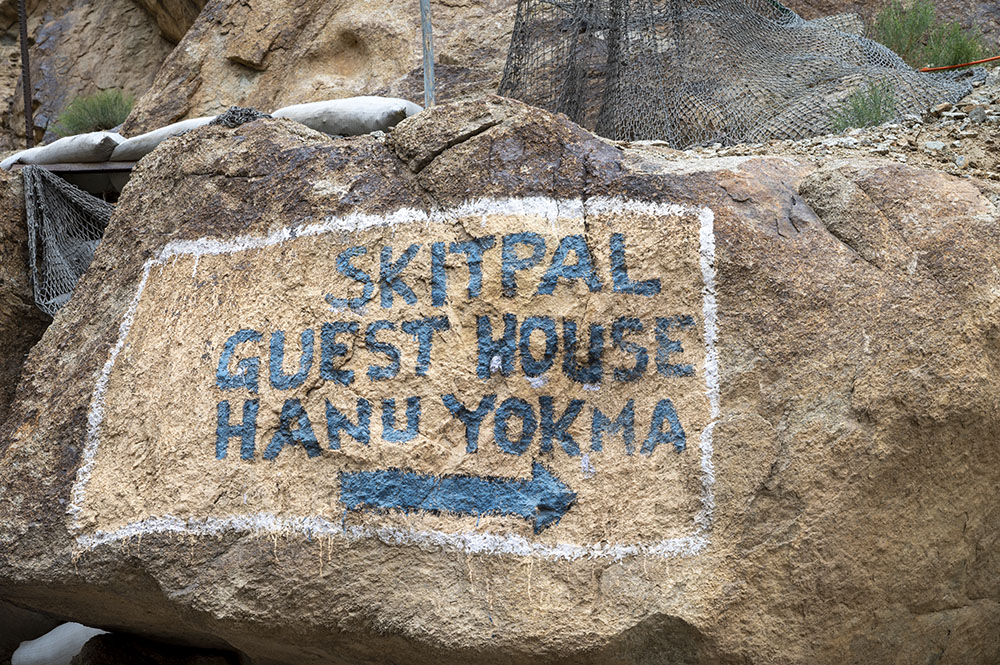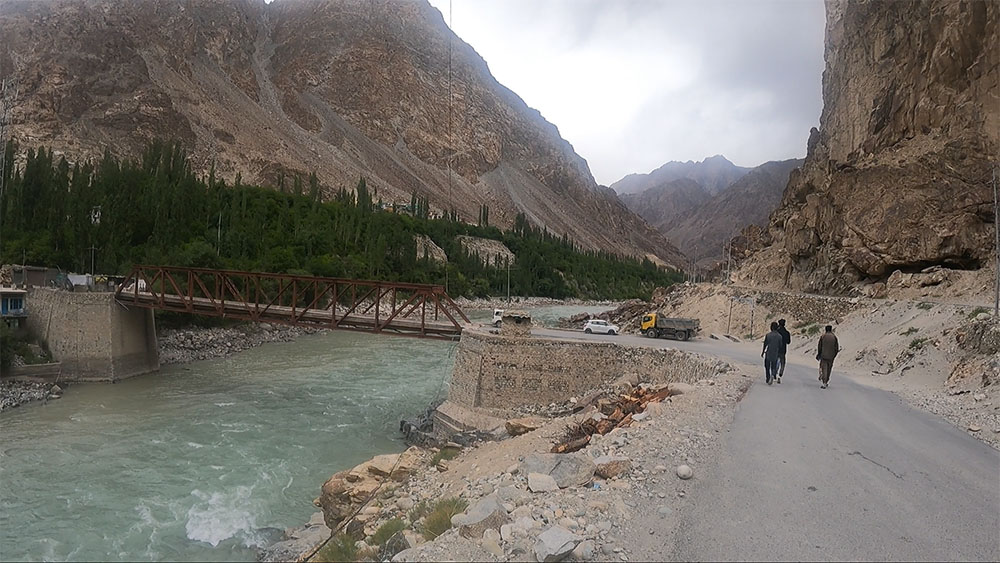The road that runs through the Aryan Valley is one of the lesser-known routes of Ladakh but is also one of the most scenic ones. It is really an experience to journey through this region and I do not mean just in terms of the natural beauty but also the people.
Just about everything that you see out here is quite different than the rest of Ladakh. Right from the landscape to the culture of the people, it is a valley that is beautiful in every way.
I was recently on a road trip to Ladakh and Zanskar that lasted for about 2 months. We covered the majority of the tourist areas in Ladakh and Aryan Valley was one of them. To read the previous parts of the travelogue, you can follow the links below.
Journey So Far:
- Srinagar City – Days 3 & 4
- Srinagar to Kashmir Tourist Camp – Day 5
- Kashmir Tourist Camp – Day 6
- Kashmir Tourist Camp to Sonamarg – Day 7
- Sonamarg to Kargil – Day 8
- Kargil to Padum – Day 9
- Sheela Waterfall – Day 10
- Bardan Monastery – Day 10
- Karsha Monastery – Day 10
- Padum to Lamayuru via Lingshed – Day 11
- Lamayuru Monastery – Day 12
It was the 12th day of our trip and the plan was to travel from Lamayuru to Kargil via Aryan Valley, Batalik village, and Hambuting La Pass. We first visited the Lamayuru monastery in the morning and by 10 am, we were ready to start our journey through the Aryan Valley.
Below is a video of our journey on this day if you want to check it out or you can continue reading the travelogue.
Quick Navigation
Aryan Valley
Aryan Valley is a small region located on both sides of the Indus River in lower Ladakh. It consists of five villages – Dah, Hanu, Garkon, Darchik, and Chulichan. The people that occupy this region are called Brokpa people.
Why is it called Aryan Valley? That is because the Brokpa people are also known as “Minaro,” which literally means “Aryan”. Another name that is used to call these people is ‘Dard’. It is said to have derived from a Sanskrit word, ‘Daradas’, meaning people who live on hillsides.
According to popular belief, the Brokpas were part of the army of Alexander the Great and came to the region over two thousand years ago. Their population is estimated just over 4000 people today.
It is really a cultural experience to be among the people of the Aryan Valley. This is a community whose traditions are said to be back thousands of years.
The hats they wear, which are more or less a flower bouquet adorning their heads look both beautiful and majestic. In heavy fur costumes, their livelihood is dependent on farming and their livestock of goats and sheep for milk and meat.
The apricots from the Aryan Valley are considered among the best in the world. As many as 12 varieties of grapes are grown in the region. All this farming turns the valley into a lush paradise, in stark contrast with the otherwise barren landscape of Ladakh.
For all other details on Ladakh, like how to reach, where to stay, what to see, safety, and other tips, you can take a look at How to Plan a Trip to Leh Ladakh – A Complete Travel Guide.
Plans for the Day
A little ahead of the Aryn Valley lies the small village of Batalik, at a distance of about 56 kilometers from Kargil. The Kargil War of 1999 was fought in this region and Batalik became the focal point of the war.
Aryan Valley and Batalik were the two places that were on our sightseeing plans for the day. I wanted to start the day as early as possible so that we were able to take plenty of breaks on the way and reach Kargil in time.
Other than the route to Batalik and Kargil, I also wanted to cover an additional 60 kilometers which were not exactly on our way. I will talk about this part later in the article but due to this, the idea was to be on our way by 6 or 7 am.
But as expected and like the last few days of our trip, this was not to happen. The previous day’s journey on the bad roads from Padum to Lamayuru had us tired to the bone. As a result, by the time we did leave our beds that morning, the clock read 8 am.
This was the third day in a row when we were starting our day much later than planned. The same happened in Padum as well. But I guess when you drive for 10-11 hours on back-breaking roads, this is bound to happen the next morning.
Anyway, we had a light breakfast, checked out of the hotel by 9 am, and went to visit the Lamayuru monastery first. Finally, we started on our way to the Aryan Valley at around 10 am.
Lamayuru to Khalsi
The first task of the day was to get Diesel. There is no fuel station on the Batalik route and after the long journey from Padum to Lamayuru, we were not going to be able to complete the journey without another tankful.
There is no petrol pump in Lamayuru either. You will have to get fuel from Kargil (if coming from the Srinagar side) and then the next gas station is in Khalsi, about 20 kilometers after Lamayuru.
The good part was that we anyway had to go that way. The road to Aryan Valley bifurcates from the main Srinagar Leh highway about 2 kilometers before Khalsi.
We drove out of Lamayuru town and took a brief stop near Lamayuru Moonland.
It is a strange formation in the mountains which is called Lamayuru Moonland because it is said that it resembles the landscape on the moon. I am not sure how correct that is but it is indeed both peculiar and beautiful to look at.
After the Moonland, we drove non-stop and arrived in Khalsi. The petrol pump is on the other side of the town, toward Leh. We drove across the small town, alive with tourists and travelers, and reached the fuel station.
After a tankful, we once again drove back 4 kilometers, crossed Khalsi once again, and reached the spot where the road to Aryan valley bifurcates from the main highway.
The Story of the Slippers
On the way, we took a break at this beautiful restaurant with a great view.
The restaurant also had a beautiful gym. We later found out that this gym was visited by celebrities like Rakul Preet Singh, Tiger Shroff, Jackky Bhagnani, and Kriti Sanon during the shooting of the movie Ganpat.
We found their autographs on the walls of the gym.
This was the 12th day of our trip. When we started from Delhi 11 days ago, we did so at 3.30 am, really early in the morning. Since we were traveling in my own car and it was a long drive to Jammu on Day 1, I thought it would be best to drive comfortably in shorts and slippers, rather than putting shoes on.
For some reason, after that, we continued traveling in our slippers only. My shoes just remained there in the car and every day, I would drive wearing my slippers only.
11 days of rough treatment is all that my slippers could take and they broke while we were sitting there at the gym. That is when I took my shoes out of the car and wore them for the first time during the trip.
Also Read: Clothes for Ladakh Trip – What to Pack
Khalsi to Batalik
The distance between Khalsi and Batalik is only about 80 kilometers. The region is marked on Google Maps so you can just follow the instructions and it will guide you to your destination.
One thing that you should keep in mind though is that travel time between both places will be anywhere between 3 to 4 hours. We completed this stretch in about 3.5 hours.
Google will tell you that it is only a 2-hours long drive but that is incorrect. The road on this entire stretch is narrow, has a lot of twists and turns, runs through several villages, and does have some bad stretches as well.
Due to all of this, there is absolutely no way that you will be able to speed up. Your average speed will only be about 20 kilometers an hour and it will take you time to travel these 70 kilometers.
We spent some time at the gym and reached the spot where the road to Aryan valley bifurcates from the main highway.
The road on the left in this picture is the Srinagar Leh highway. It continues on straight to Leh but in order to enter the Aryan Valley, you need to turn left and take a U-turn.
Also Read: How to Plan a Family Trip to Leh Ladakh
Skurbuchan, Achinathang, Hanu, Dah
From this diversion, we started on our way to the Aryan Valley. The first stop came near Skurbuchan. The monastery in this village is strikingly beautiful. It is located right next to the road in a very scenic location and there was absolutely no way that we could have passed it without stopping.
I wanted to go in and see the monastery but unfortunately, the gate was closed. We continued our journey and crossed Skurbuchan village, one of the greenest areas of Ladakh.
After Skurbuchan, we reached the village of Achinathang and stopped at a shop there to get some tea.
We saw this beautiful mosque.
Shortly after, we reached the bifurcation where the road uphill goes to the Hanu Village.
The village of Hanu does not actually fall on the route. If you want to go see the village, you will have to take the road to your left and go uphill.
The village is divided into two – Hanu Yokma and Hanu Goma. Hanu Yokma is about 10 kilometers from this point and that is where all the tourists return from mostly. If you continue driving up for another 5 kilometers, you will reach Hanu Goma.
The road actually continues uphill for another 20 kilometers after the village but I do not believe tourists are allowed to go any further.
There are a couple of guest houses and homestays in Hanu Yokma if you want to stay there overnight. Otherwise, drive uphill for 10 kilometers, see the Aryan village and come back to the same spot.
For a while, we toyed with the idea of going into the village but then decided against it and moved on.
Chiktan Fort
After a short drive, we reached this point. From here, the road to the left passes through the Chiktan village, and after 30 kilometers, it exits into the Srinagar Leh highway, near the village of Khangral.
There is an ancient fort in Chiktan that I was keen on visiting. Other than that, I also wanted to cover this entire road.
When we started in the morning from Lamayuru, I was of the idea that we will turn on this road, drive 30 kilometers to Khangral, see the Chiktan fort on the way, and then drive back the 30 kilometers.
But by the time we reached this spot, it was already 2 pm. With the kind of narrow roads we had seen in the Aryan Valley so far, I knew that adding another 60 kilometers to the journey would mean adding travel time of anywhere between 2 to 3 hours.
- Journey Ahead: Batalik – The Focal Point of the Kargil War
So I gave up the idea of covering this road and Chiktan fort for my next trip to Ladakh and moved on toward Batalik. Please click on the link above to continue reading the next part of this travelogue.
Mobile Network in Aryan Valley
Jio, Airtel, and BSNL all have coverage in the Aryan Valley. None of the other networks work here.
Of these three, Jio works the best. It remains connected on the entire route and also has good data speed. You may lose reception at a few places but will get the network back shortly.
BSNL has network services in this region but it is not that good. The data speed is slow and the voice reception is bad.
Accommodation in Aryan Valley
You can find accommodation in Aryan valley in the villagers of Skurbuchan, Achinathang, and Hanu in the form of homestays and guest houses. These are the ones that I know for sure but you may also be able to find a homestay in other small villages on the way.
If you are looking for a comfortable stay, you should seek accommodation in either Hanu Village or the large hotel in Achinathang.
Road Conditions in Aryan Valley
The condition of the road on this entire road is a mix of average and good. There are a few small bad stretches in between but mostly you will be traveling on an average road. The road between Kargil and Hamboting La is super smooth though.
As I mentioned previously, it is not the condition of the road but its width rather that makes the journey a little difficult and long. The road continues to remain narrow with a lot of twists and turns in between.
Petrol Pump & Other Amenities in Aryan Valley
There is no petrol pump in this region. The nearest one is located either in Kargil (on the Batalik side) or in Khalsi (on the Aryan Valley side).
Basic medical assistance is available in almost all the villages. For anything serious though, you will have to rush to Kargil.
Permit for Aryan Valley
There is no permit required for visiting the Aryan Valley. You may be asked to register yourself at the police check post and produce a government-issued identity card (preferably Aadhar Card).
Aryan Valley Ladakh – Conclusion
I hope the travelogue, pictures, and details on Aryan Valley were of help. If you have any questions, you can ask in the comments section below. You can also contact me on Instagram to chat with me live or subscribe to my YouTube channel and ask a question there.
[instagram-feed]

